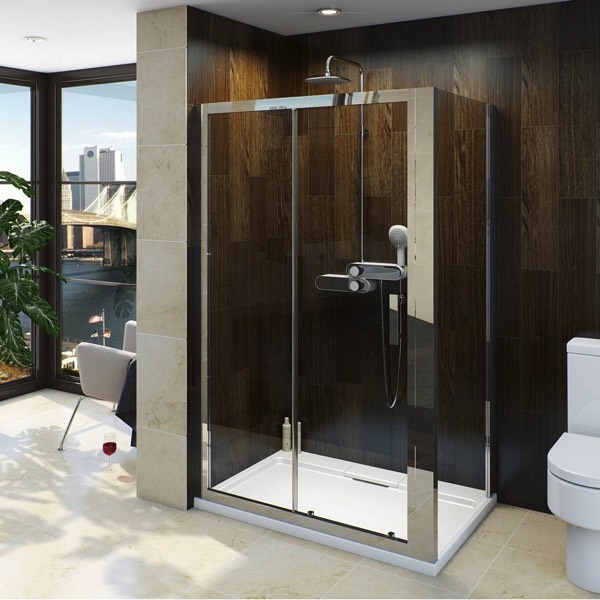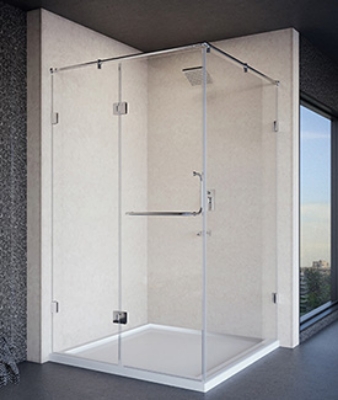Building A Better Bathroom - How To Install A New Shower Unit
Building A Better Bathroom - How To Install A New Shower Unit
Blog Article
We've stumbled on this great article relating to How to Build a Shower Enclosure for Your DIY Bathroom down the page on the web and accepted it made perfect sense to relate it with you over here.

An effective shower setup requires mindful planning and a great deal of work. In many cases, you will certainly need to do three sorts of tasks: mounting wall surfaces, installing the plumbing, and also completing walls.
Various Types of Shower Units
Most Usual Blunders
Preparation.
To start with, you should pick the kind of shower that you desire to set up. It is important to establish whether the chosen shower can coping with specific systems and also can control a secure level of water via the boiler. Many shower devices nowadays are designed to be versatile to various water pressures (such as kept warm water and also cold keys).
It is additionally important to take into consideration the water stress and the preparation of the piping and also drainage for the shower.
Technique.
Depending upon the sort of shower you wish to set up, the shower head need to either be suited order to avoid its contact with the water in the bath below or the base tray, or it needs to have a check shutoff.
Before starting, it is a good idea to note the placements of the shower head and control, and to prepare the pipe-work involved. Furthermore, the drain system to get rid of the drainage will need to be planned. Both settings of the cord course and also the shower switch will also need to be thought about if an immediate or electrical shower device is being mounted.
Make use of the guideline guide provided with the shower unit to fit the shower control.Before fitting the pipes that will supply the water to the shower system, it is very important to remove the water system. In order to shield the pipelines, they need to be offered a water-proof covering as well as additionally fitted with separating shutoffs. The pipelines can after that be hidden right into the wall surface and also glued over to neaten the total appearance.
Fit the base tray, shower head, as well as installations.
Link the primary shower control to the pipes that will be supplying the water (This may require a female screw thread adapter).
Reconnect the water supply and also examination the pipelines for any kind of leakages, as some may need tightening.
If you are installing an electrical shower, remember to turn off the power supply before making any electrical connections. Once these connections have actually been made (there need to be guidance within the user's manual), the power supply can be switched over back on.
Readjusting Water Stress to Match Your Shower.
The cold water storage tank can be raised to a higher elevation (often as low as 150mm (6inches)) by fitting a strong wooden support under it - perhaps made up of struts and blockboards. If you choose this option, the major and also circulation pipelines will also need to be elevated to fulfill the brand-new height of the reservoir.
Alternatively, a booster pump (a solitary pump or a dual/twin pump) can be fitted. Whichever kind is selected, it should be connected into the power supply in order to run.
Piping as well as Drain.
It is best to use 15mm diameter supply pipelines, as well as make the runs to the shower as short and also straight as feasible so as to maintain optimal stress as well as minimise warmth loss. Furthermore, by minimising the use of joints for pipeline corners, you can decrease the resistance in the circulation of the supply of water. You can achieve this by flexing the pipelines instead.
Most Popular Shower Enclosure Options to Upgrade Your Bathroom
Frameless Shower Enclosures
Switching to a frameless shower enclosure can instantly add a modern feel to your bathroom. This type of shower enclosure eliminates the visual obstruction of frames, providing a seamless flow using fully customisable glass.
Since they are fully customisable, it fits all sizes and shapes of your bathroom space. You can also design it in a way suitable for an expansive spa shower.
In-line Shower Options
Another popular shower enclosure option you can use to upgrade your bathroom is an in-line shower. This type of shower installs a shower glass in-line with an adjacent wall, keeping water within the shower area.
You can have two options for in-line showers: hinged doors and sliding doors. An in-line shower with hinged doors allows you to have one glass shower door mounted on one side and open the door outwards. Meanwhile, in-line showers with sliding doors will enable you to save space but are more expensive.
Semi-Frameless Shower Enclosures
The semi-frameless shower enclosure is also an excellent shower enclosure option as it reduces the possibility of mould. Since the glass door is frameless, there’s no way soap and water will be stuck on it. But to ensure that there’s no way for mould to flourish in your bathroom, choose frameless shower enclosures instead.
Semi-frameless shower enclosures are the ideal choice if you adore the design of frameless showers but would prefer a more affordable solution. These types of shower enclosures have a range of options available by the glass manufacturing process in accordance with various height specifications.
You can also customise this type of shower enclosure. However, your options might be limited because of the standard sizes and heights.
Glass Block Shower Enclosure
If you don’t want a bathroom door and walk-in glass shower enclosures are not an option either, a glass block shower enclosure is for you. Glass blocks will allow your bathroom to access maximum daylight while having the privacy it offers. Also, glass block enclosures might require a bit more effort to clean than other enclosures, but they are durable and versatile options.
You can also be creative when using glass blocks for your bathroom. Since this type of shower enclosure is made of small glass blocks, you can easily create a unique shower enclosure shape. There are many options for thickness, styles, and colours, too.
Final Thoughts
Upgrading your bathroom with a new shower enclosure is a great way to add value to your home. Not only will it appear nice, but it will also be more functional and efficient. When choosing a shower enclosure, pick one that fits the style of your bathroom and your budget. It’s also paramount to take note of the pros and cons of each type before installation to ensure you don’t miss anything important.
https://gharpedia.com/blog/shower-enclosure-to-upgrade-bathroom/

I was made aware of that report about How to Install a Shower Enclosure from a good friend on our other domain. Appreciated our write-up? Please share it. Help somebody else locate it. Thank-you for taking the time to read it.
Customer Reviews
Report this page